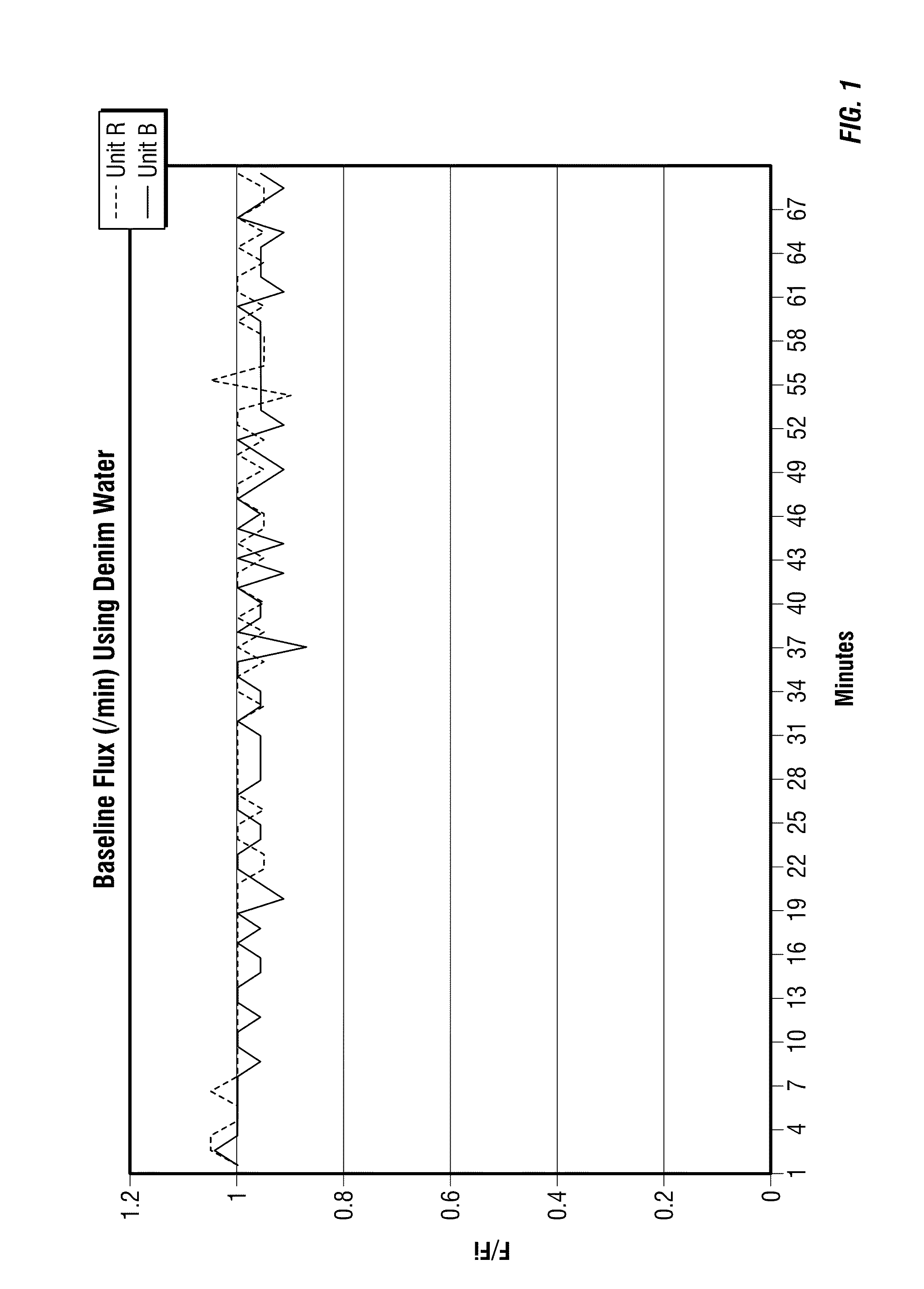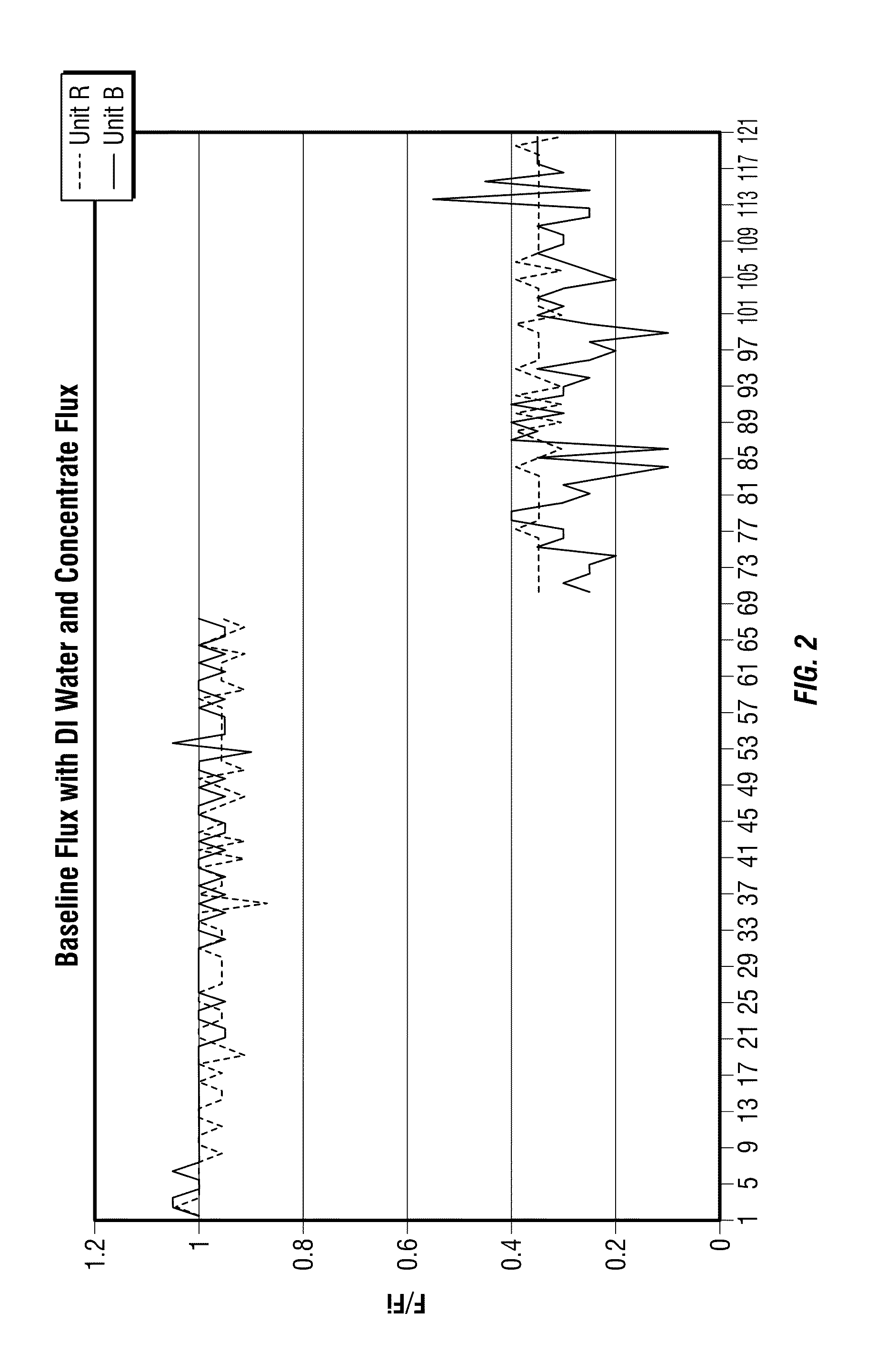Method for cleaning filter separation systems
a filter separation and filter technology, applied in the direction of membrane technology, water/sludge/sewage treatment, chemistry apparatus and processes, etc., can solve the problems of filter fouling, mass transport through the filter per unit time, flux reduction, etc., and achieve the effect of enhancing filtration
- Summary
- Abstract
- Description
- Claims
- Application Information
AI Technical Summary
Benefits of technology
Problems solved by technology
Method used
Image
Examples
example 1
[0030]2 membrane separation system were tested using demineralized water at 500 PSI and at 122° F. The flux rate through both units was determined and the result are shown in FIG. 1. Note that both unites were operating essentially identically after the demineralized water test.
[0031]Then concentrated solids feed without the normal addition of surfactant and chelant was introduced into both units. The surfactant and chelant tend to reduce the amount of foulant on the membrane. In this test, fouling was maximized to increase the foulant deposited on the membrane. After 96 hours of concentration, the flux for both units was determined and displayed in FIG. 2. The graph below shows the change in flux from a clean membrane using demineralized water to a fouled membrane using concentrate solids feed. Note that the reduction in flux for both systems is essentially the same.
[0032]Both units were rinsed, filled with deionized water and the flux was retested. In FIG. 3, the data from the ret...
example 2
[0034]Heavily and identically fouled membranes were cleaned using different solids. All membranes were prepared by filtering a high solids feed with no surfactant or chelant for 72 hours. Various 1% suspensions were tested. The suspensions were added to the test apparatus and allowed to mix for 16 hours.
[0035]FIG. 5 shows a membrane treated with a 1% concentration of powdered calcium carbonate. Some foulant has been removed and this test is used as a baseline to indicate that the agent is effective.
[0036]FIG. 6 shows a membrane treated with a 1% suspension of bentonite. Note that more of the deposit has been removed.
[0037]FIG. 7 shows a membrane treated with a suspension of an admixture (0.5%) of bentonite and (0.5%) diatomaceous earth. Note that even more of the deposit has been removed.
[0038]FIG. 8 shows a membrane treated with a 1% suspension of powdered cellulose. Note that this composition resulted in the most deposit having been removed.
PUM
 Login to View More
Login to View More Abstract
Description
Claims
Application Information
 Login to View More
Login to View More - R&D
- Intellectual Property
- Life Sciences
- Materials
- Tech Scout
- Unparalleled Data Quality
- Higher Quality Content
- 60% Fewer Hallucinations
Browse by: Latest US Patents, China's latest patents, Technical Efficacy Thesaurus, Application Domain, Technology Topic, Popular Technical Reports.
© 2025 PatSnap. All rights reserved.Legal|Privacy policy|Modern Slavery Act Transparency Statement|Sitemap|About US| Contact US: help@patsnap.com



